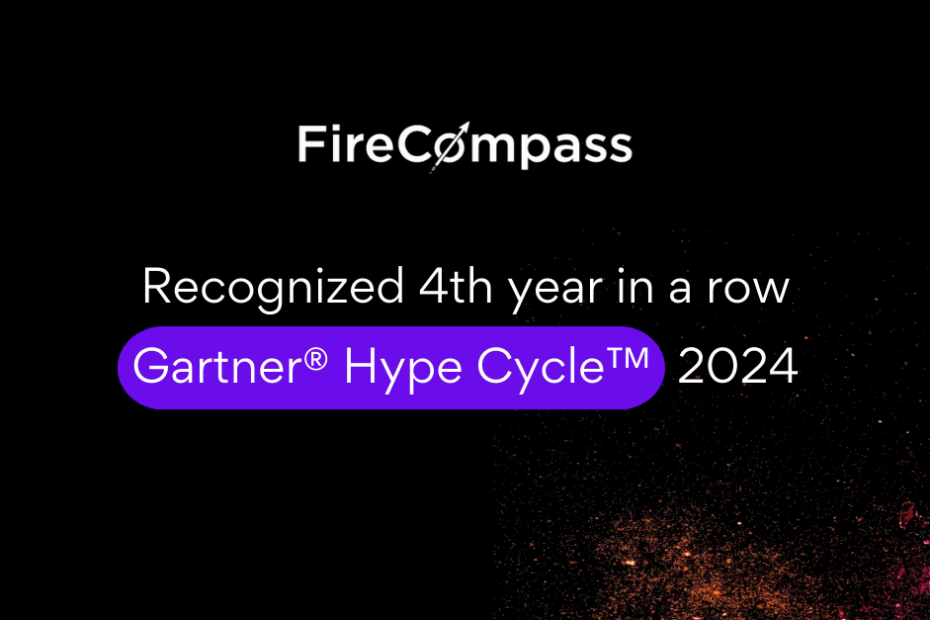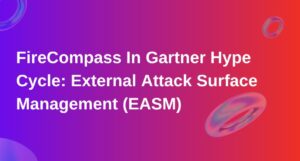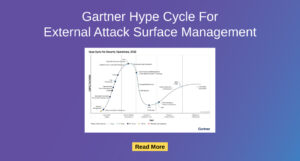As organizations worldwide rapidly adopt digital transformation strategies, their external attack surfaces continue to expand. This shift, driven by the increased use of cloud services, hybrid work environments, and the growing integration of IT, OT, and IoT, has dramatically heightened exposure to external threats. To combat these risks, External Attack Surface Management (EASM) is now a critical part of cybersecurity strategies. Recognized in Gartner Hype Cycle 2024, FireCompass is at the forefront of offering solutions that address these evolving needs.
The Expanding Role of EASM in Cybersecurity
EASM has become essential as organizations face new challenges in identifying and managing their internet-facing assets. EASM tools like those offered by FireCompass provide organizations with comprehensive visibility into their external infrastructure, mapping out internet-facing assets, continuously monitoring for exposures, and prioritizing vulnerabilities. In doing so, EASM helps security leaders respond to threats more effectively while managing their digital assets in an ever-evolving threat landscape.
According to Gartner Hype Cycle 2024, by focusing on four primary capabilities, EASM delivers:
- Asset Discovery and Inventory: Ensures organizations maintain an accurate inventory of all external-facing systems.
- Continuous Monitoring: Tracks cloud services, IoT devices, and other internet-facing elements for potential exposures.
- Risk Prioritization: Assesses vulnerabilities and ranks them based on the potential business impact.
- Seamless Integration: EASM solutions integrate with existing ticketing systems and security automation tools to streamline response efforts.
Business Impact of EASM
For security and risk management leaders, EASM provides actionable insights to protect digital assets from external threats. By combining asset discovery, real-time monitoring, and risk prioritization, EASM not only identifies vulnerabilities but also aids in developing a more resilient cybersecurity posture.
The impact of EASM extends to several business-critical areas:
- Enhanced Risk Management: EASM tools provide clear insights into how external threats could impact an organization’s most valuable resources.
- Informed Decision-Making: With the ability to prioritize high-risk exposures, security teams can focus their efforts on the areas that matter most.
- Improved Efficiency: EASM solutions allow security teams to automate time-consuming tasks like vulnerability detection and prioritization, freeing up resources for more strategic activities.
The Importance of Adversarial Exposure Validation
While EASM helps organizations gain visibility into their external assets, Adversarial Exposure Validation (AEV) complements this by validating the exploitability of vulnerabilities. Adversarial exposure validation uses simulated attack scenarios to assess the effectiveness of existing defenses and identify vulnerable paths within an organization’s infrastructure.
This capability is particularly important because it goes beyond simply identifying risks; it demonstrates the feasibility of real-world attacks. AEV allows security teams to not only see their weaknesses but also to understand how they could be exploited by attackers. This process leads to a more reliable, measurable outcome and ensures organizations can focus on mitigating high-impact vulnerabilities.
Why Adversarial Exposure Validation is Crucial as per Gartner Hype Cycle 2024
As automated penetration testing tools and breach and attack simulation (BAS) vendors converge, they provide easy-to-deploy, flexible products that can simulate various attack scenarios. These tools combine automation with realistic simulations, resulting in more frequent, reliable assessments that enhance cybersecurity strategies.
Adversarial exposure validation is key for several reasons:
- Realistic Simulations: It replicates attack techniques that highlight both the existence and exploitability of exposures, offering a clear picture of an organization’s actual security posture.
- Automation and Efficiency: Continuous validation through automated simulations reduces the need for resource-heavy, manual red team exercises while expanding the frequency and depth of assessments.
- Improved Risk Prioritization: By focusing on demonstrated attack paths rather than theoretical vulnerabilities, AEV helps organizations prioritize actions based on real-world risks.
Business Impact of AEV
Adversarial exposure validation provides organizations with a more accurate, attacker-centric view of their vulnerabilities. By demonstrating the feasibility of specific attack paths, it helps security teams identify which exposures pose the most significant risk to critical assets.
Additionally, AEV supports multiple cybersecurity initiatives, including:
- Red Team Augmentation: Automated tools allow organizations to initiate red team exercises without the need for expensive, highly specialized expertise.
- Attack Surface Reduction: Consistent use of AEV tools ensures that organizations maintain a strong security posture across multiple locations and business units.
- Compliance and Control Validation: AEV helps organizations meet regulatory requirements by simulating attacks that validate their overall security posture.
Challenges and Considerations for AEV
Despite its benefits, AEV implementation comes with its own set of challenges. Many organizations struggle to adopt adversarial exposure validation due to the complexity of the tools and the high level of internal sponsorship required across departments. Additionally, while many vendors offer AEV capabilities, they often focus too narrowly on specific use cases, such as red teaming, rather than providing a broader, more integrated solution.
Furthermore, the deployment of AEV tools requires an advanced technical skill set. Security teams must possess a deep understanding of threat actor techniques, as well as infrastructure and application architecture, to effectively operate these tools.
Recommendations for Organizations
For businesses considering adopting adversarial exposure validation, it’s important to:
- Prioritize High-Impact Scenarios: Start with the most critical vulnerabilities and build out your AEV strategy from there.
- Evaluate Vendor Capabilities: Look for vendors that offer comprehensive attack simulation and penetration testing capabilities, and assess their ability to support broader exposure management programs.
- Integrate Automation with Human Expertise: Use AEV tools to augment human-led red team activities, enabling a more collaborative “purple teaming” approach that improves detection and response capabilities.
- Consider Deployment Options: Hybrid approaches that combine agent and agentless technologies provide the greatest flexibility for organizations.
FireCompass’s Role in Cybersecurity
FireCompass is a SaaS platform for AI-powered Penetration Testing, Continuous Automated Red Teaming & NextGen Attack Surface Management. The platform continuously indexes and monitors the deep, dark, and surface web to map out an organization’s digital attack surface, including Shadow IT blind spots. FireCompass automatically launches safe multi-stage attacks, mimicking real attackers, to help identify attack paths before hackers do, ensuring robust protection against cyber threats.




